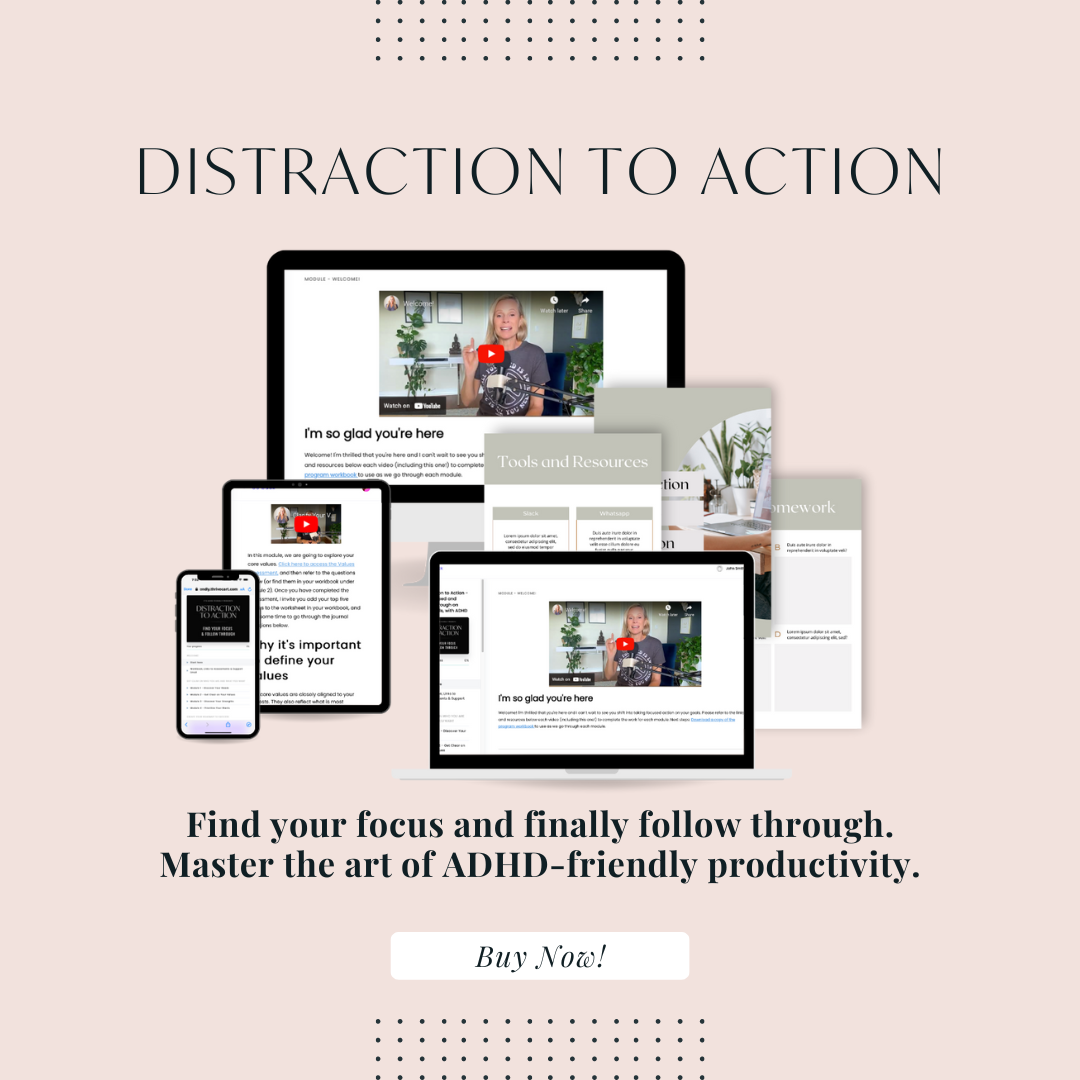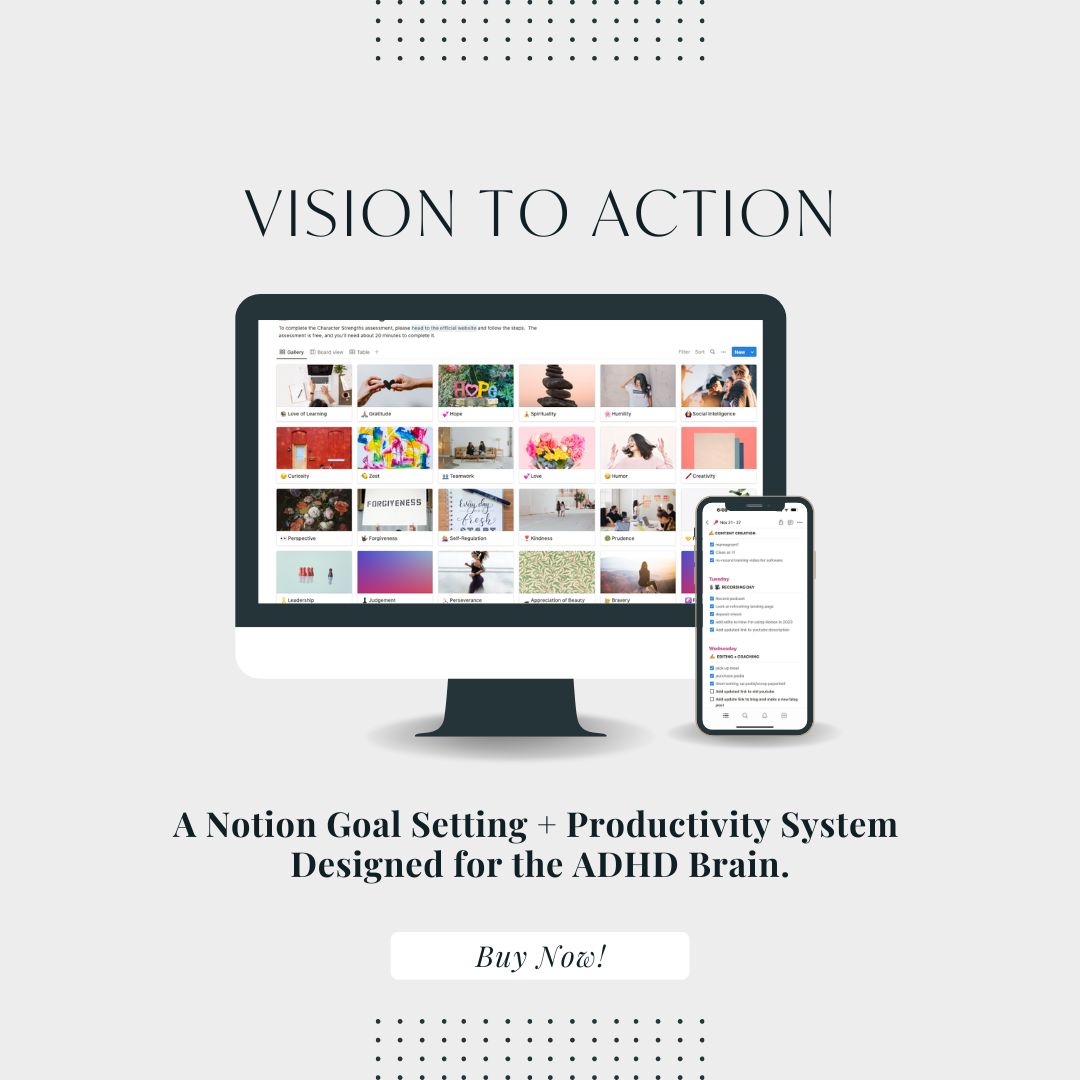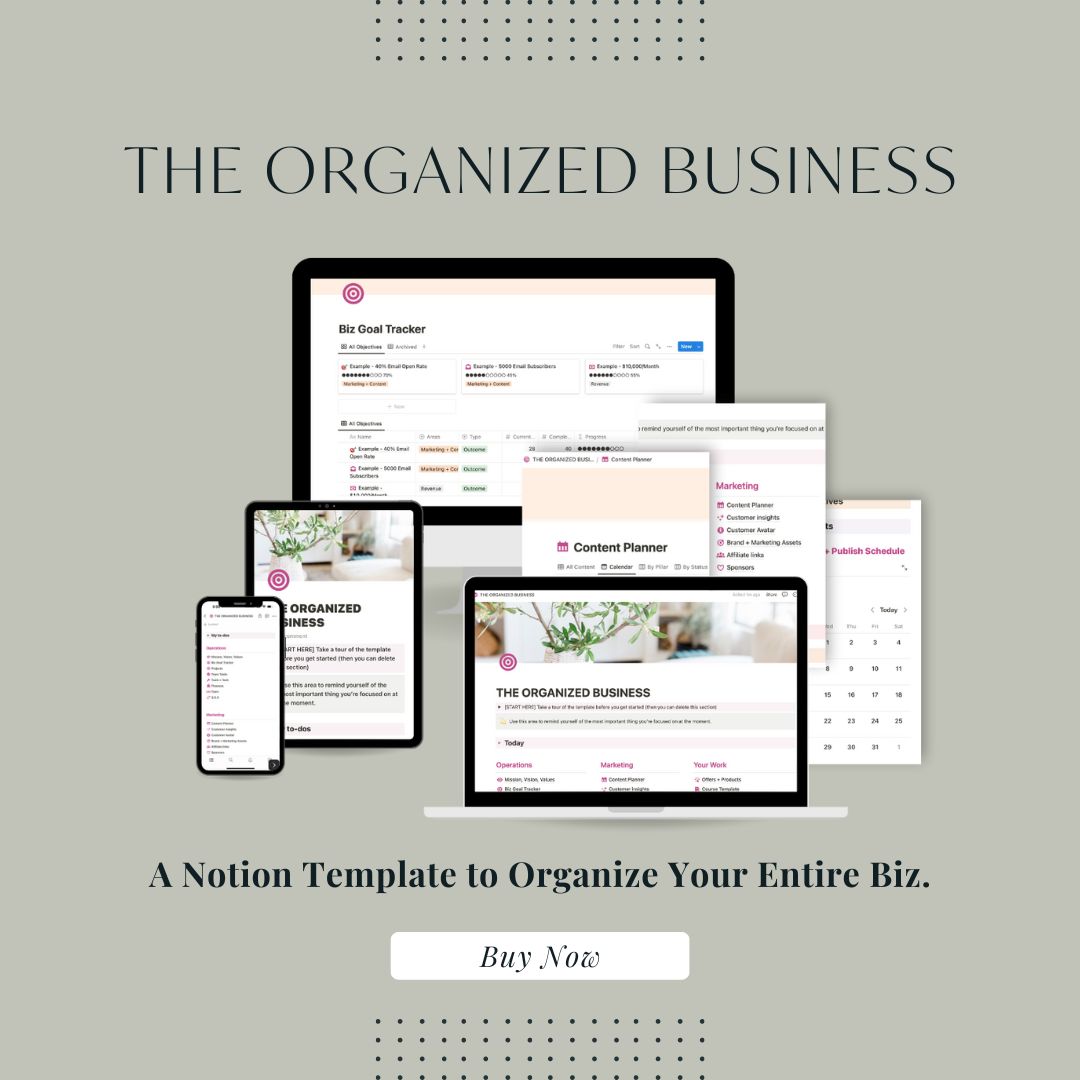Head's up, there could be affiliate links ahead!
October marks the beginning of the last 90 days of the year, and there’s something about that timeframe that feels incredibly motivating. Today, I want to share with you a simple goal planning process (and free template) that I learned from the amazing Ali Abdaal, a productivity guru on YouTube. His method, which he got from his business coach (who apparently charges $50,000 per hour!), has been a game-changer for me. I’ve tailored it to be ADHD-friendly, and I’m excited to walk you through it.
The Template: Simplifying ADHD Goal Setting
Ali’s template is wonderfully straightforward. The first step is to categorize your life into three main areas: health, work, and personal. However, feel free to adapt these categories to fit your own needs. Once you have your categories, choose one goal or intention for each area. Make sure your goals are specific and meaningful to you.
Now comes the (perhaps, no-so-fun) part – breaking down your goals into daily actions. For example, let’s say your health goal is to eat more vegetables. Your daily actions could include meal prepping, making soups for lunch, and trying at least one new veggie-filled recipe per week. The key is to identify the small steps you can take each day that will lead you closer to your goals.

Energize Your Goals: Embodying the Ideal You
Here’s where we add a special touch to the goal-setting process. Think about someone you admire, someone whose energy aligns with the way you envision yourself tackling these goals.
For instance, I chose Kimberly Snyder as my inspiration for my health goal. I resonate with her commitment to eating veggies and living a balanced lifestyle.
For my work goal, Justin Welch came to mind because he embodies the values of building a sustainable business with integrity.
And when it comes to my personal goal, Michael Singer’s light-hearted and spiritual approach to life resonates with me (just finished reading his last book and it’s SO good). By adopting the energy of these role models, I feel more connected to the meaning behind my goals.
Infusing Meaning into Your ADHD Goals: The Key to Long-Term Success
Setting goals without understanding their deeper meaning can lead to lackluster results. To truly make your goals meaningful, ask yourself a series of questions for each goal:
- Why is this goal important to me?
- Are my expectations realistic?
- What behaviors or choices do I need to change to achieve this goal?
- How much time am I willing to dedicate to it?
- How will I track my progress?
- What does success look like to me?
- What would failure look like?
- How will my life be different if I achieve this goal?
- What will happen if I don’t focus on this goal?
By answering these questions, you’ll gain clarity and ensure that your goals align with your values and aspirations. This step is vital because it separates meaningful goals from mere wishful thinking. We want to set ourselves up for success and build a positive self-concept along the way.
Goal Check-Ins and Accountability: Strengthening Your Commitment
While Ali’s original template includes a 45-day check-in, I’ve found that individuals with ADHD benefit from more frequent reminders. Working memory can be a challenge for us, so setting up regular check-ins becomes crucial. Here’s how I do it:
- Incorporate the check-ins into your weekly planning system. Use a task management system like Notion, a paper planner, or any other tool that works for you.
- Schedule weekly reminders to review your goals, reassess your progress, and make any necessary adjustments.
- Celebrate your wins, no matter how small, and learn from any setbacks or challenges you encounter.
By implementing these check-ins, you’ll stay connected to your goals, keep yourself accountable, and maintain the momentum throughout the last 90 days of the year.

Courses & Templates
My Notion Setup: Tracking Goals in a Digital Environment
I find Notion to be an excellent tool for organizing my goals and tasks. Here’s how I set it up:
- Create a goal tracker template in Notion. You can use my pre-made templates for business or personal planning or design your own.
- Break down your goals into actionable tasks and assign due dates.
- Use progress bars or other visual indicators to track your progress.
- Incorporate your goals into your weekly planning system, ensuring they are always visible and top of mind.
Remember, you can adapt this system to suit your preferred planning method. The key is to have a system in place that keeps your goals front and center and frees up your mind for other important tasks.
Optimizing Your ADHD Goal-Setting for Success
When setting goals, it’s essential to optimize your approach for maximum effectiveness. Here are a few tips to supercharge your goal-setting process:
- Be specific: Clearly define your goals to provide focus and direction.
- Break them down: Divide big goals into manageable, bite-sized tasks.
- Stay on top of them by adding them to your task management system (I love Notion for this).
- Check in on your progress!! Schedule weekly reviews to see how things are going and course correct as necessary.
- Celebrate your wins and take time to appreciate that you can set goals and follow through on them.
That’s my break down of Ali Abdaal’s goal setting system and how I think we can add simple steps as ADHD’ers to ensure that we don’t forget about our commitments to ourselves, and follow through on what we start.
Are you game to try this system? Click here to download the free template.
Have fun and happy goal setting!
Cheers Caren










Leave a Comment